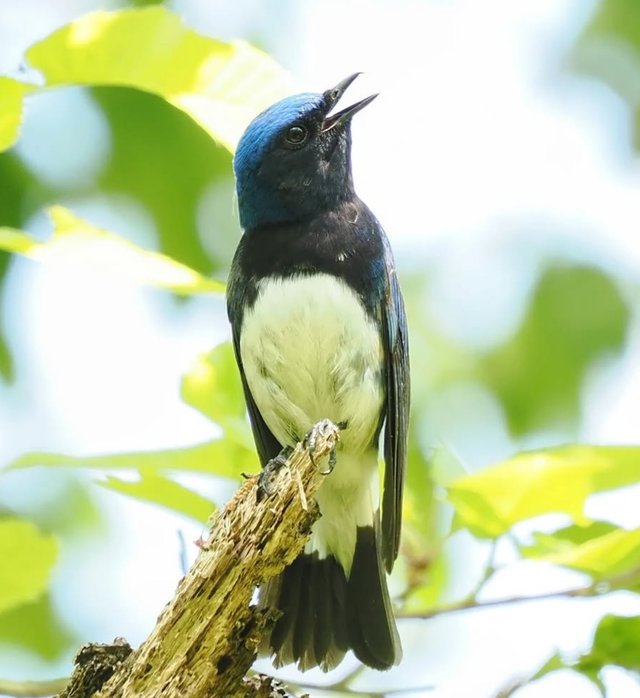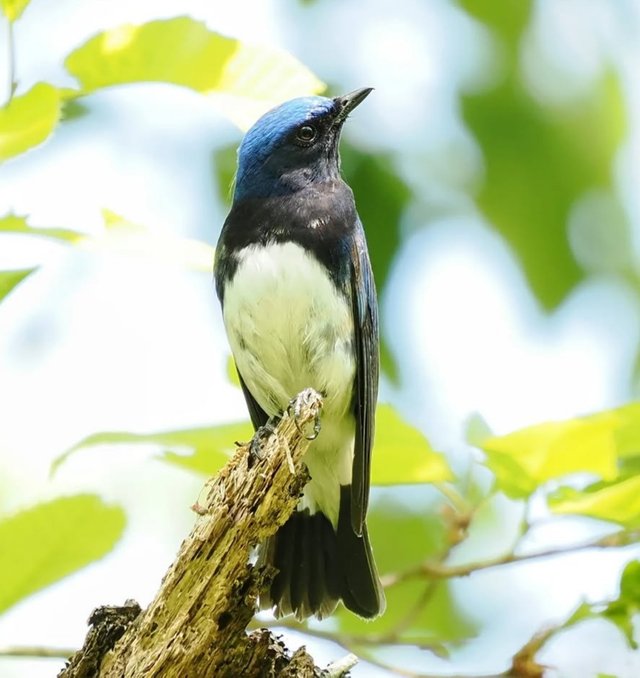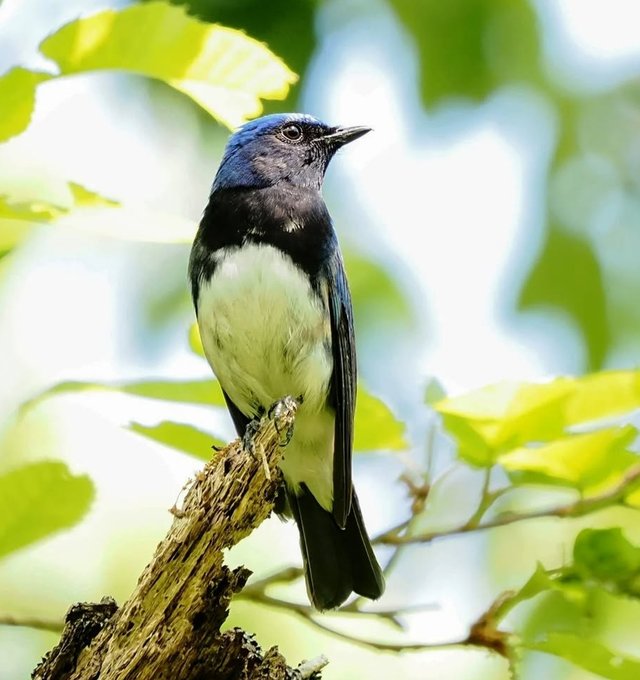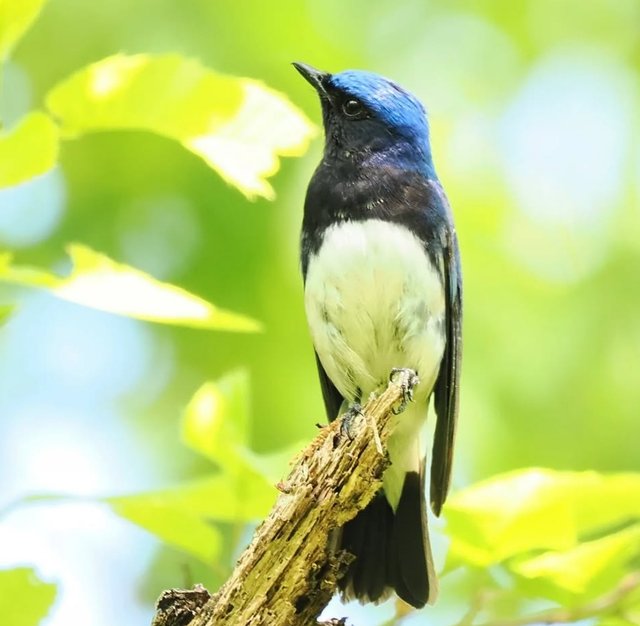Blue-and-White Flycatcher So Cute Bird
Blue-and-white Flycatcher: A Jewel of the Forest Canopy
In the dappled sunlight of East Asia’s temperate forests, a flash of brilliant blue and crisp white cuts through the green canopy like a living sapphire. This enchanting vision belongs to the Blue-and-white Flycatcher, a small but striking bird whose plumage and melodious call captivate birdwatchers and ornithologists alike.
A Glimpse of Elegance
The Blue-and-white Flycatcher is named for its stunning coloration. The adult male is a spectacle: deep cobalt-blue on the head, back, and upper wings, with contrasting pure white underparts and a blackish face. The female, while more understated, has a gentle charm—muted brown above with pale buff underparts, a delicate palette that offers camouflage while nesting.
Measuring approximately 16–18 cm in length, this flycatcher has a slim build, long tail, and a nimble presence that reflects its aerial acrobatic skills. It belongs to the family Muscicapidae, a diverse group of Old World flycatchers known for their insect-catching prowess and often melodious voices.
Habitat and Range
This migratory species is primarily found in eastern Asia. It breeds in the forests of Japan, the Korean Peninsula, northeastern China, and parts of eastern Russia, preferring deciduous or mixed woodland habitats with dense foliage. During the breeding season, they nest high in the trees, away from the reach of most predators.
In winter, the Blue-and-white Flycatcher migrates south to warmer climes, primarily to Southeast Asia, including the Philippines, Indonesia, and the Malay Peninsula. Their arrival and departure mark the change of seasons for many birdwatchers in their breeding and wintering grounds alike.
Behavior and Diet
True to the name "flycatcher," this bird is an adept hunter of insects, snatching flies, beetles, moths, and caterpillars mid-air or off leaves in short, swift flights. They are often seen perching quietly on a high branch, scanning their surroundings for movement before making a sudden darting swoop to catch their prey.
Males are particularly vocal during the breeding season. Their song—a sweet, warbling series of whistles—resonates through the forest and plays a key role in attracting mates and defending territory.
| Device | cannon eos 700D |
|---|---|
| Lens | 55-250 zoom leans |
| Location | Bangladesh |




